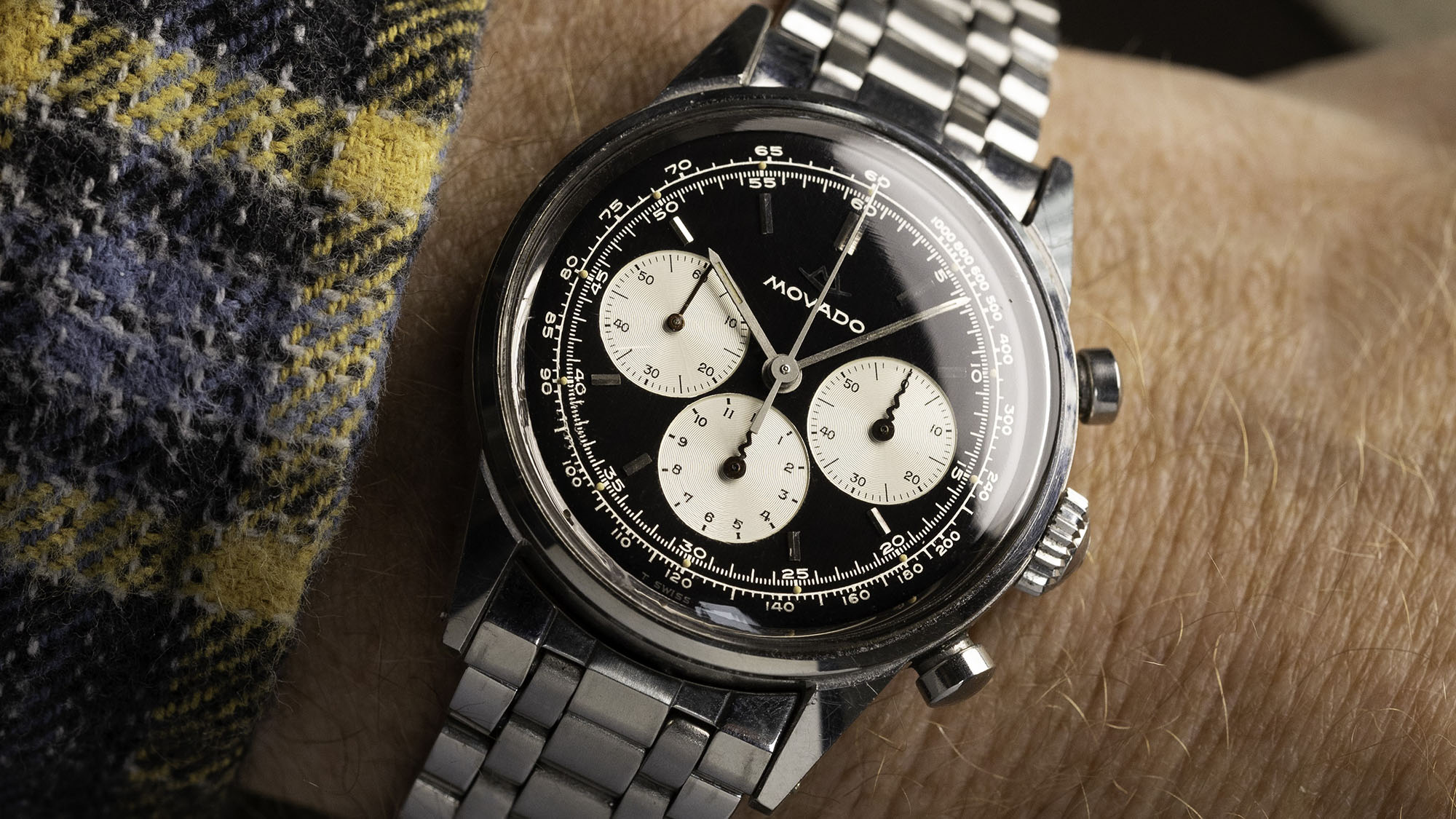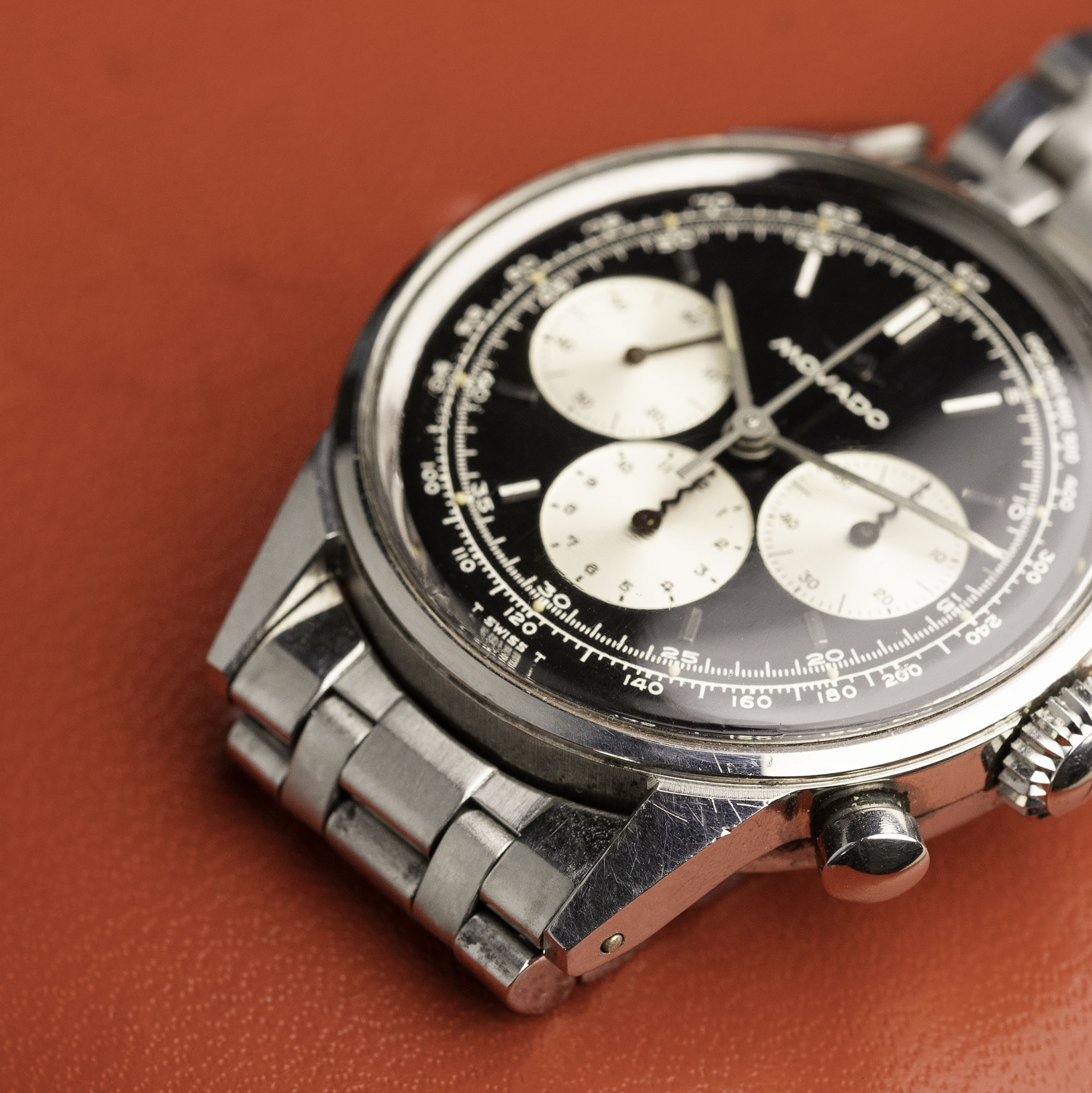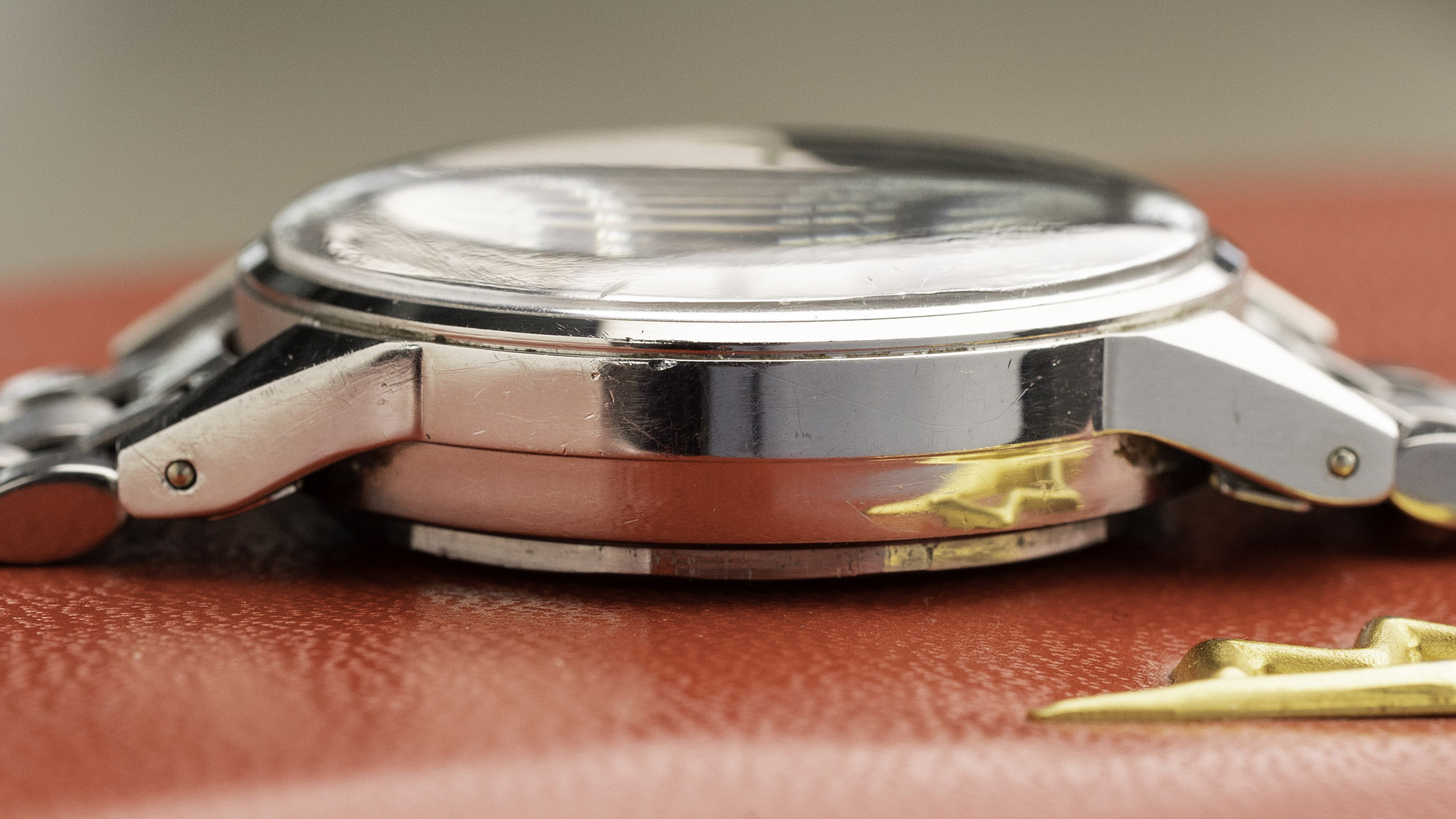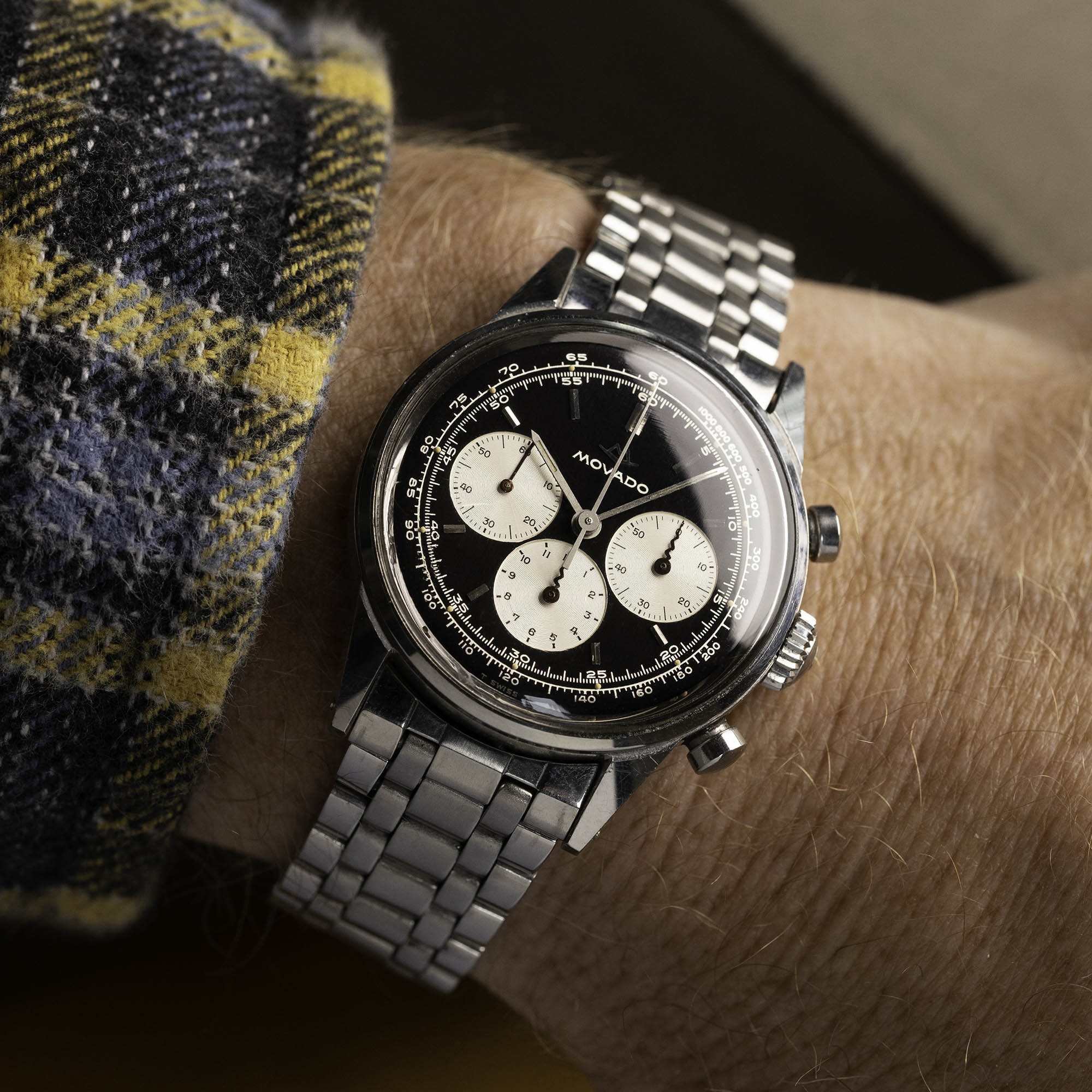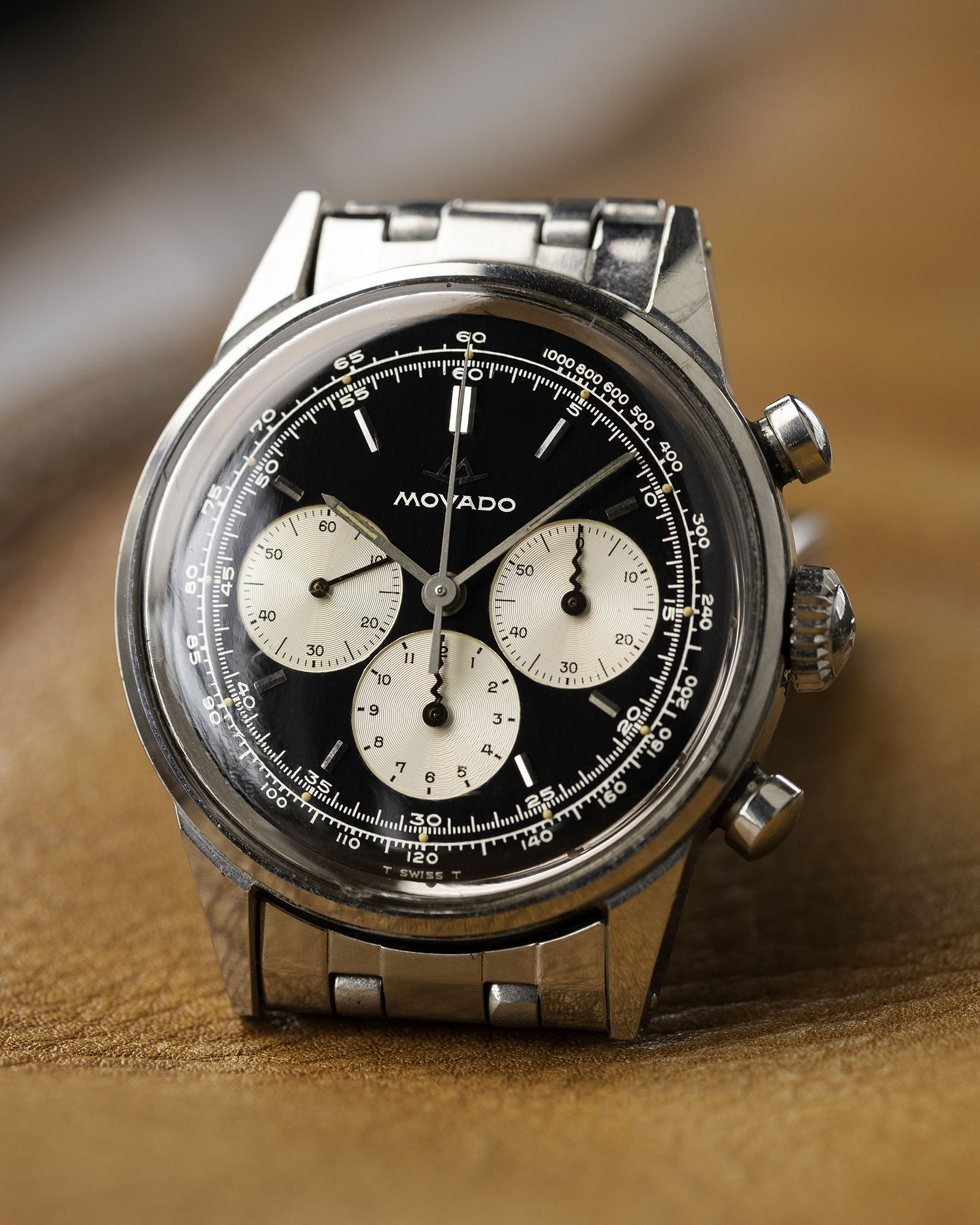 Photos courtesy of Chris George
Photos courtesy of Chris George
When most enthusiasts think of Movado these days, the first thing that usually comes to mind is the simplistic, minimalist “Museum Dial” collection. Despite this less-than-sterling reputation in modern horological circles, the Movado name graced some of the finest and most compelling timepieces of the 20th century, particularly from the ‘20s to the ‘70s. Chronographs were a particular specialty for the brand during this era, developing one of the first commercially available split-seconds chronographs, as well as the first two-pusher modular chronograph in 1938. Despite this excellent legacy, other brands such as Heuer, Omega, and Zenith tend to loom large when discussing this “golden era of handwound chronographs.” For those in the know, however, Movado occupies a special seat in this horological pantheon, and examples like this late ‘60s Movado M95 ref. 95-704-568 make it clear to see why.
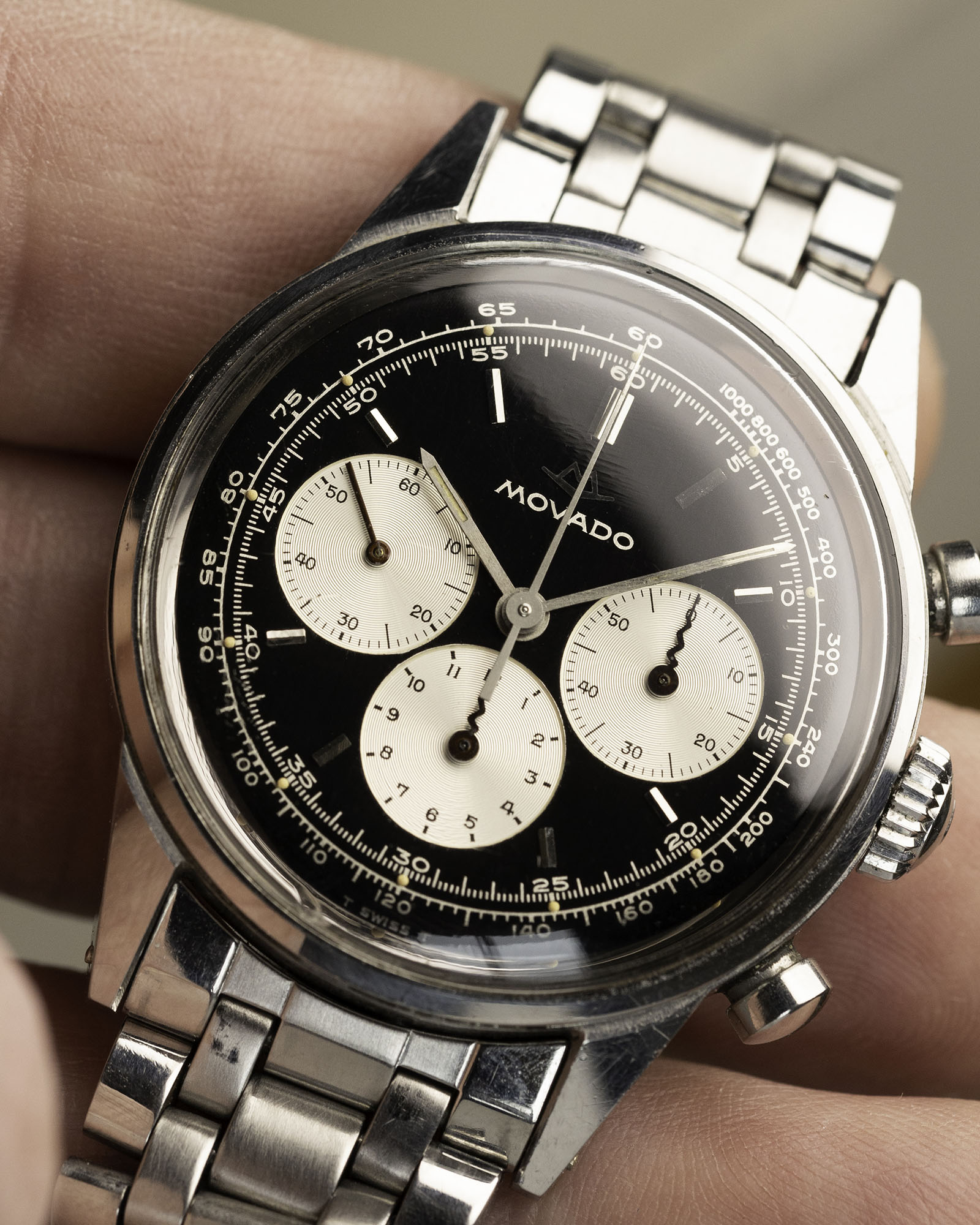
When it comes to experts in midcentury chronographs, few enthusiasts can match Linden Lazarus, founder and owner of vintage watch retailer Oliver and Clarke. At 19 years old, Lazarus already has years of vintage watch experience under his belt, running one of the most successful and knowledgeable businesses of its kind in the current marketplace. This particular M95 is Lazarus’s personal watch, and it’s one that holds a special place of regard in his collection. Lazarus touts this piece as the finest example of the M95 he’s ever seen, and one that required years of patient hunting to acquire. Given the variety and quality of pieces that pass through Oliver and Clarke on a regular basis, it’s a mark of the real gravitas that classic Movado can carry.
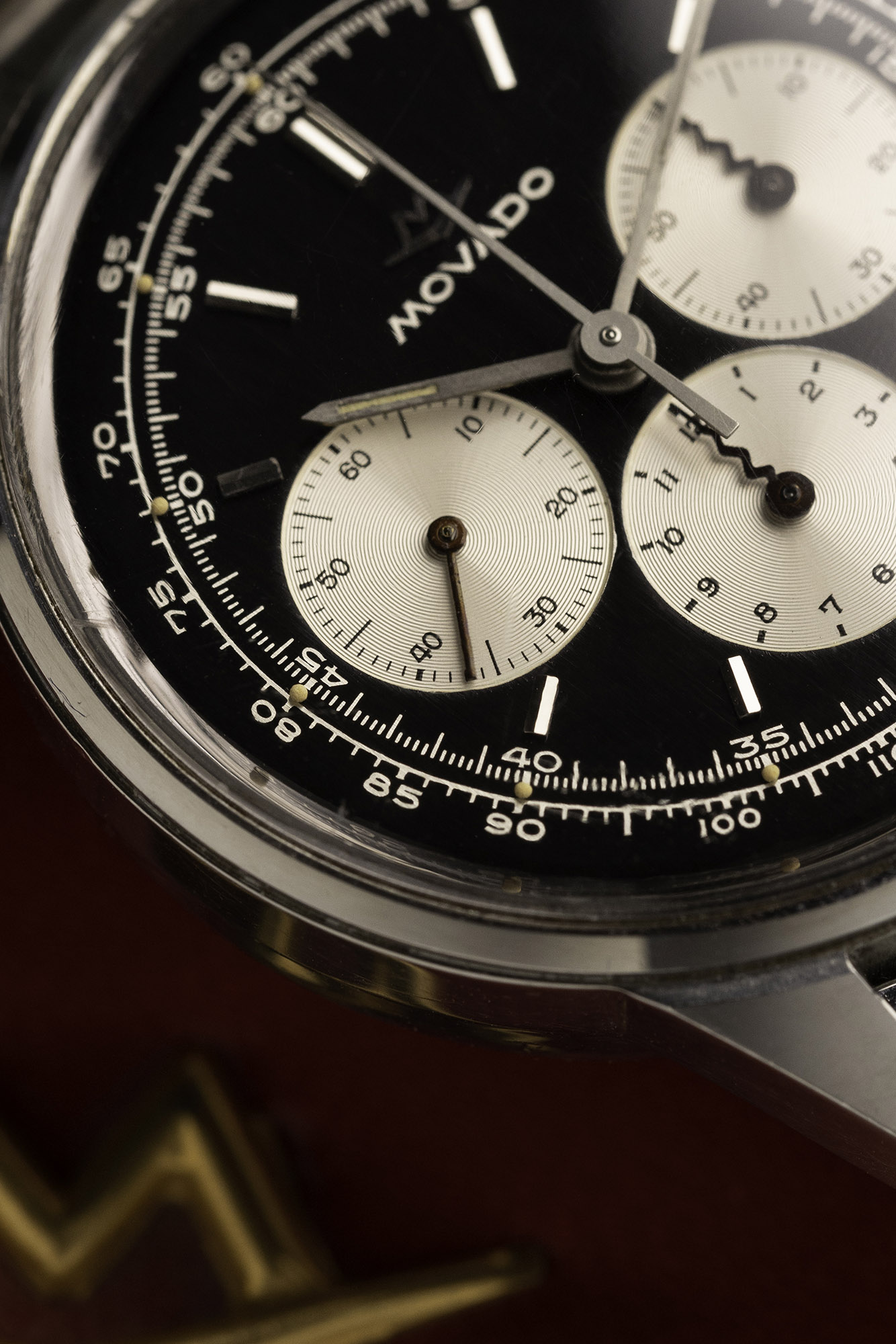
The M95 in particular is one of the brand’s longest-running and most diverse chronograph lines, remaining in the Movado catalog from 1939 all the way to 1970 (at which point, it was supplanted by El Primero-powered chronographs developed in conjunction with then-brand partner Zenith). While the series remained more or less mechanically unchanged over more than three decades, this long production run spawned an impressive assortment of aesthetic variants. This late-production third generation example is arguably the pinnacle of the series, with a thoroughly sorted movement and a handful of highly desirable components.
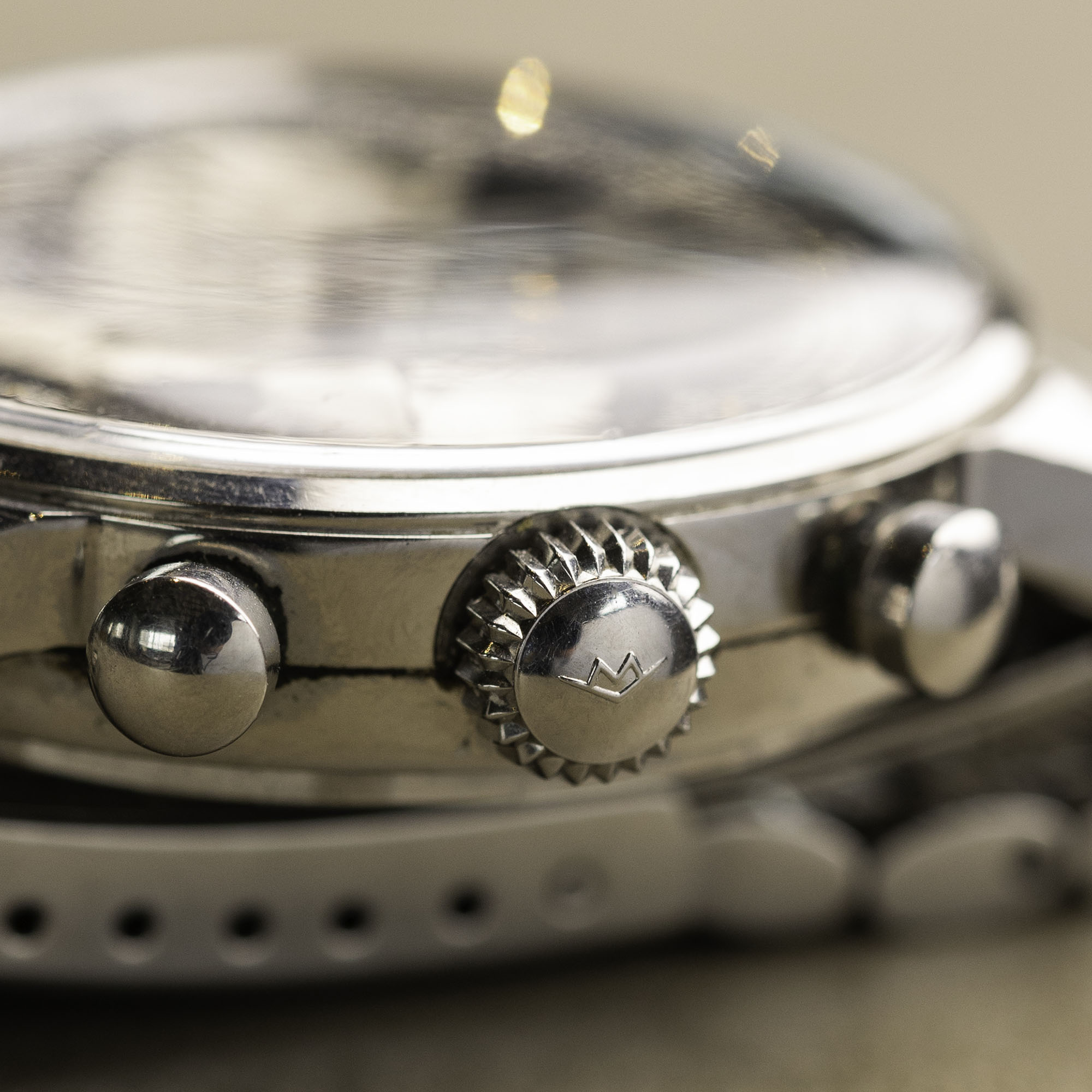
At 35mm-wide, the Movado M95 ref. 95-704-568’s stainless steel case is pleasantly compact on the wrist, but a nearly all-dial design and an elegantly slim polished sloping bezel lend it a classically sporting stance. The overall design is classic midcentury chronograph fare, with long, sharply tapering lugs, a high visual beltline, and a set of elegantly rounded piston pushers. It’s these pushers that give the wearer their first taste of the M95’s unique character. Compared to most conventional chronographs, the M95 is “upside down” – that is to say, the 4 o’clock pusher starts and stops the chronograph, while the 2 o’clock pusher resets. Designed to make operations easier for left-handed wearers without creating a dedicated “destro” layout, this quirk takes some getting used to at first but feels more or less intuitive after a few hours of wear. This case is also one of the M95’s most sought-after features, with a truly impressive pedigree. This late-model variant’s case was manufactured by François Borgel, which famously produced cases for Patek Philippe during this period. It also carries a legacy of working with brands such as Vacheron Constantin, and holds the distinction of creating the first-ever water resistant case for Rolex before the introduction of the in-house Oyster design.
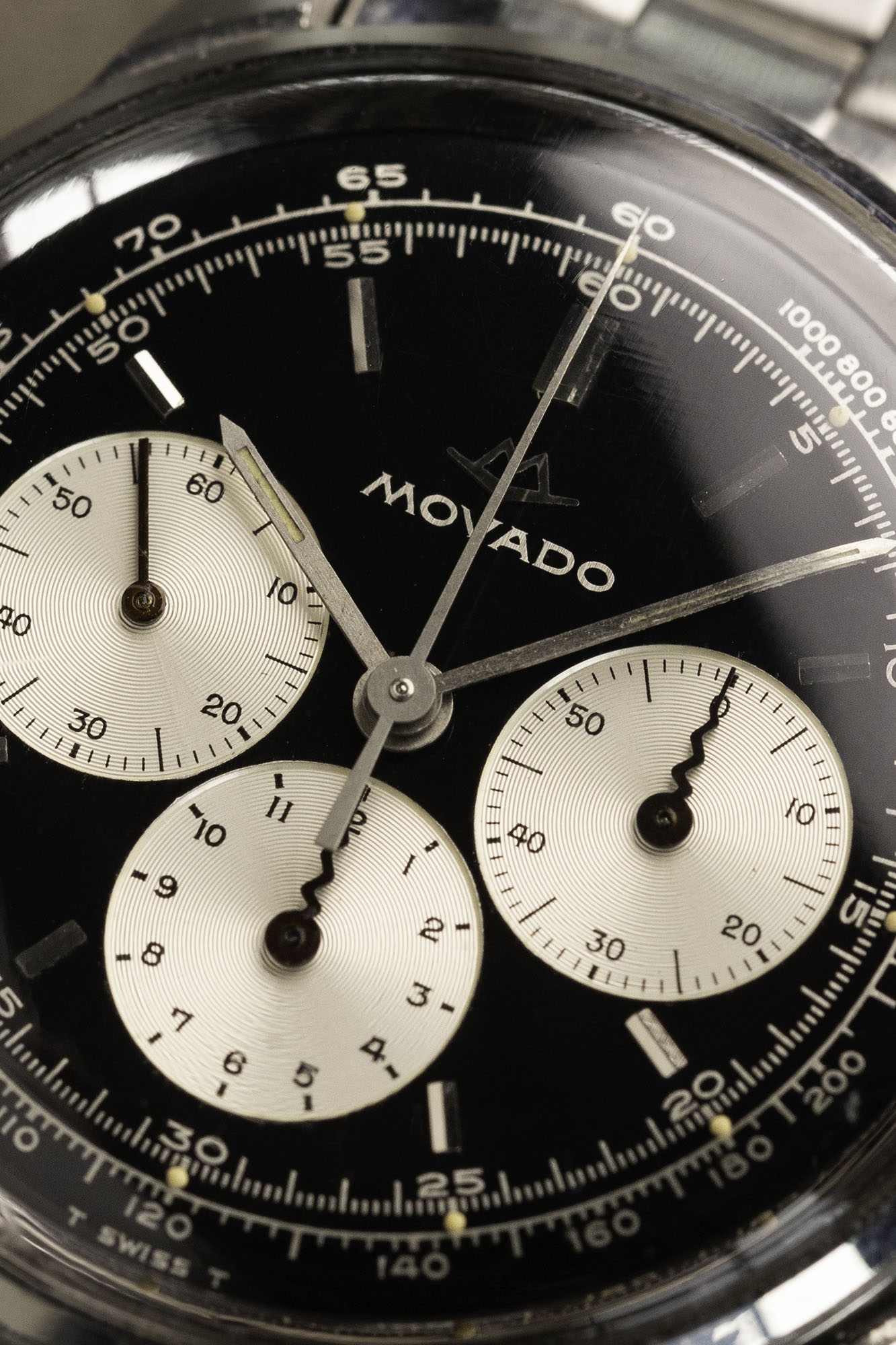
While most of the Movado M95 ref. 95-704-568’s dial is simple and function-forward, there’s an impressive amount of visual nuance that gives this model its own unique character. At first glance, the eye is immediately drawn toward the wavy “serpentine” chronograph subdial hands at 3 o’clock and 6 o’clock. These charming elements are a hallmark of vintage Movado chronographs, and add a splash of richer personality to the stark reverse panda layout. In addition, this example shows just a touch of patina, with warmth that shines through the black main surface in areas of light wear, and in the handsomely slender polished accent rings surrounding the azurage silver subdials. The “Movado” text below the applied 12 o’clock emblem also showcases the attention to detail prevalent in this era of the brand. Rather than printing in simple white to match the rest of the dial text, this single word is etched through to the base dial layer and topped with a strong vertically brushed finish. It’s an easy element to miss on a first viewing, but one that speaks profoundly to the quality at play here. A simple printed outer tachymeter scale rounds out the striking and finely balanced layout.
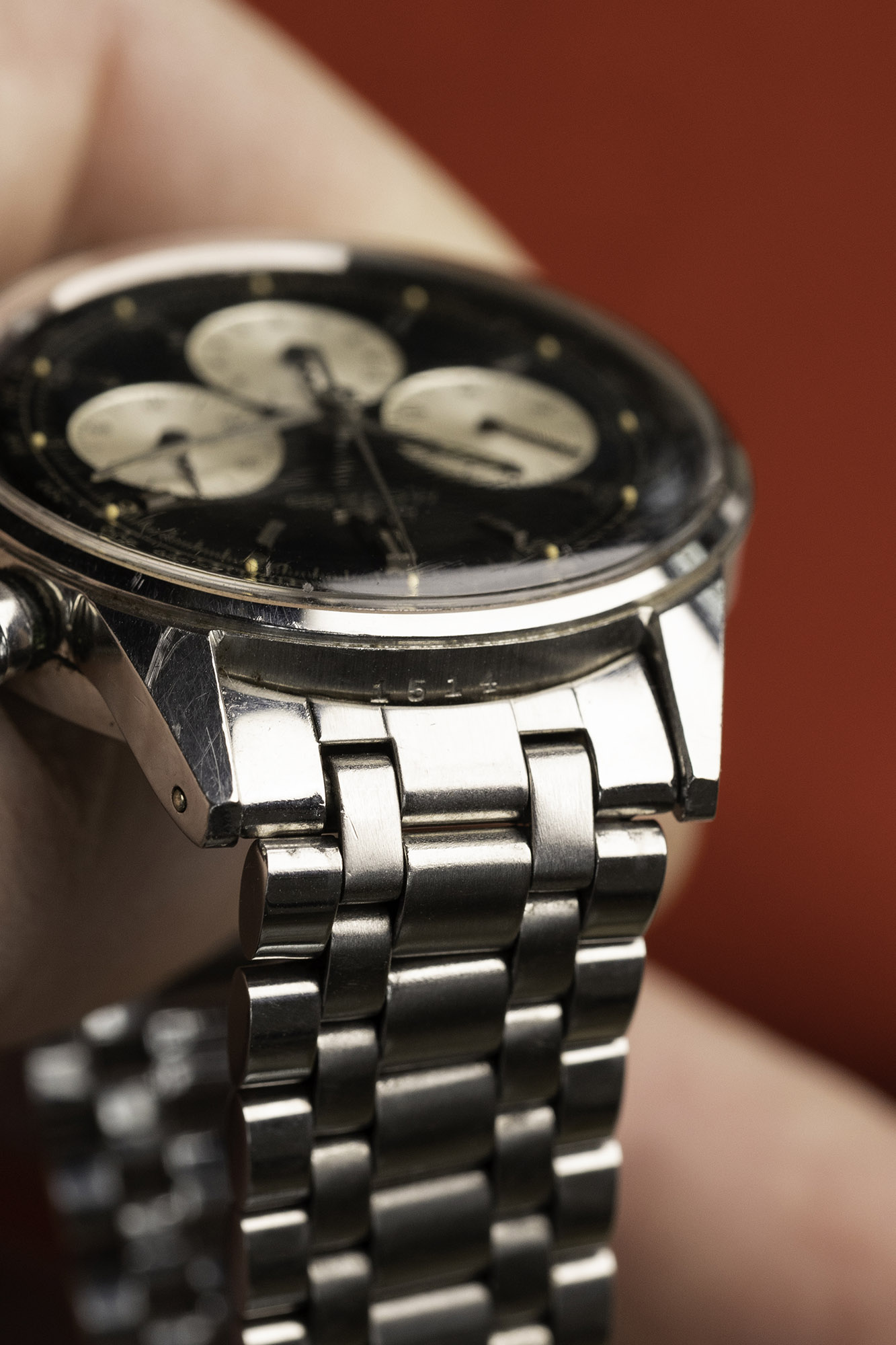
Although it remained in production for upwards of 30 years, the manufacture M95 handwound chronograph movement that lends this Movado its name is something of an outlier for chronograph movements of this era. Beyond the aforementioned unorthodox pusher layout, the M95 might be termed a “double modular” movement. Not only is this movement based on an independent three-hand movement with a separate chronograph module, the M95 is an extension of the earlier two-register M90 that adds a second independent module dedicated to the 6 o’clock chronograph hours subdial. Despite this complex multi-part assembly, the M95 is a remarkably robust movement for the era, and served as the backbone of the brand’s sports watch offerings for decades.
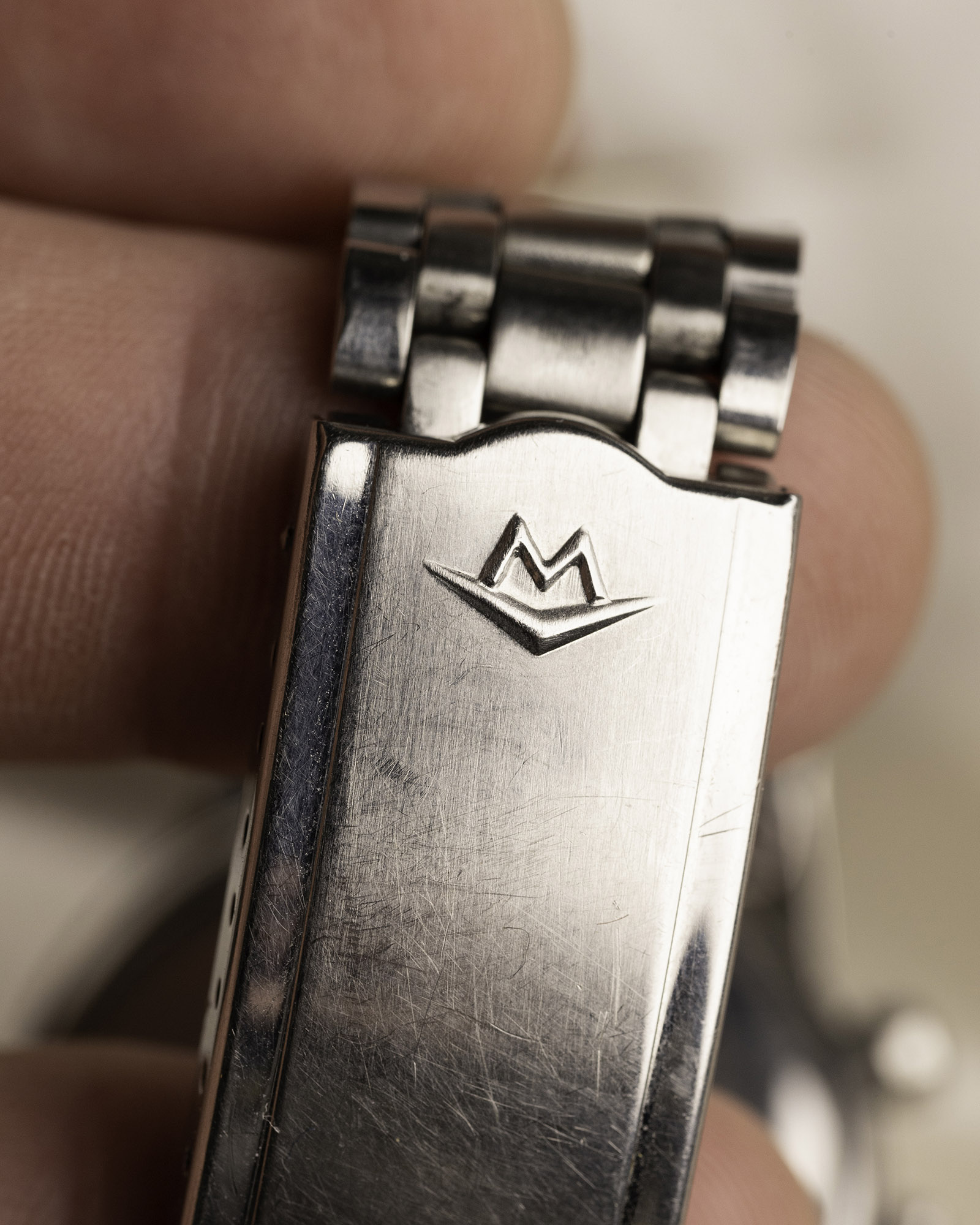
The original bracelet attached to this particular Movado M95 ref. 95-704-568 is another high point for this model. Sometimes incorrectly classed as a beads of rice design, this distinctive five-link design has more in common with the Holzer bracelets found on Mexican-market Omegas during this period. There’s a fair amount of the lightweight, flexible feel often associated with vintage bracelets, but sharp finishing and a well preserved signed clasp make this a joy on the wrist.
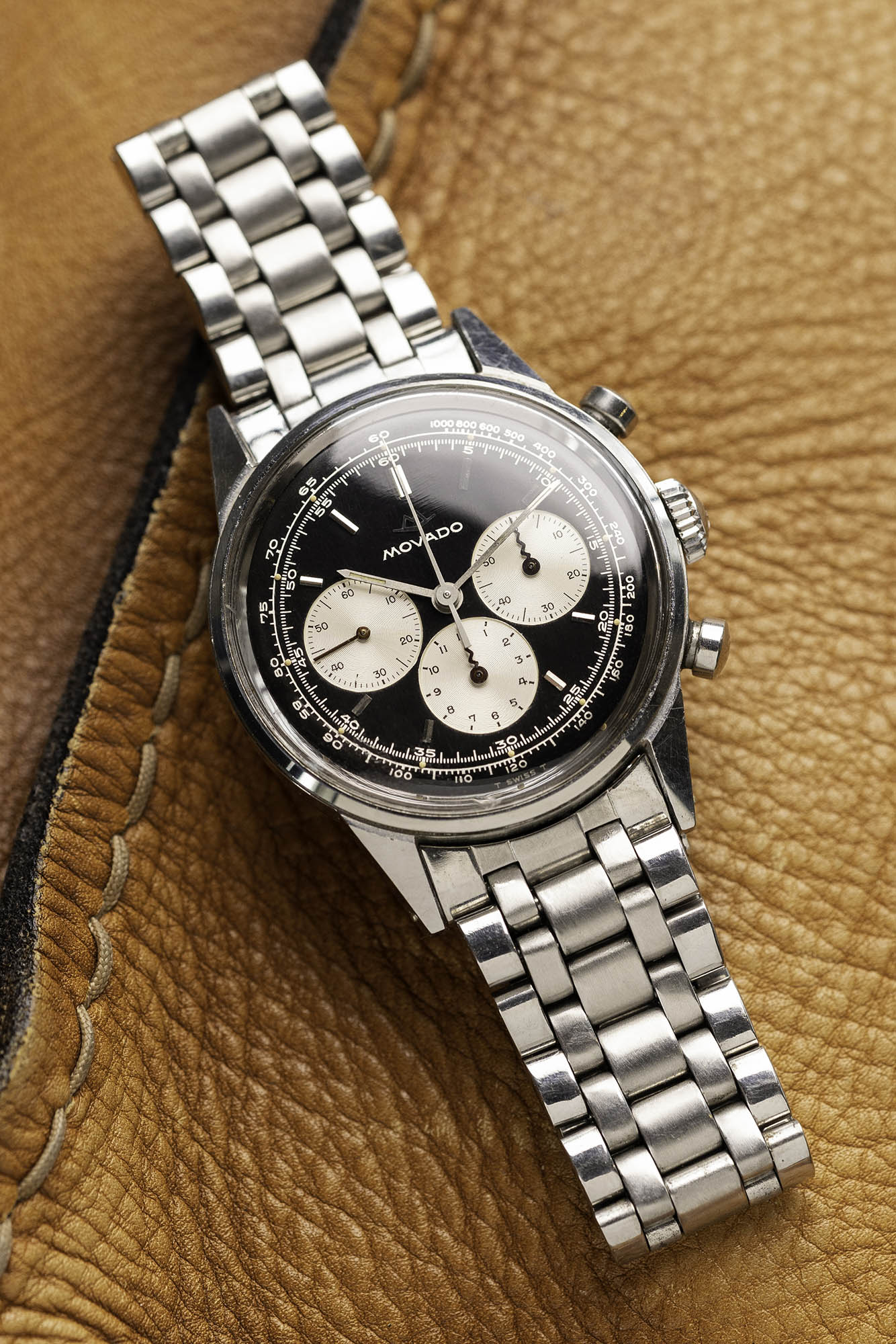
Given the current state of Movado in enthusiast discussions, it can be easy to overlook the brand’s immense heritage and the world-class timepieces it has produced. Examples like this late ‘60s Movado M95 ref. 95-704-568, however, stand as some of the finest offerings from the heyday of the handwound chronographs. With well-informed collectors and industry professionals such as Linden Lazarus beginning to embrace the heritage, quality, and character of classic Movado, it also serves as a compelling reminder to all enthusiasts to look beyond the obvious choices when selecting a timepiece.

